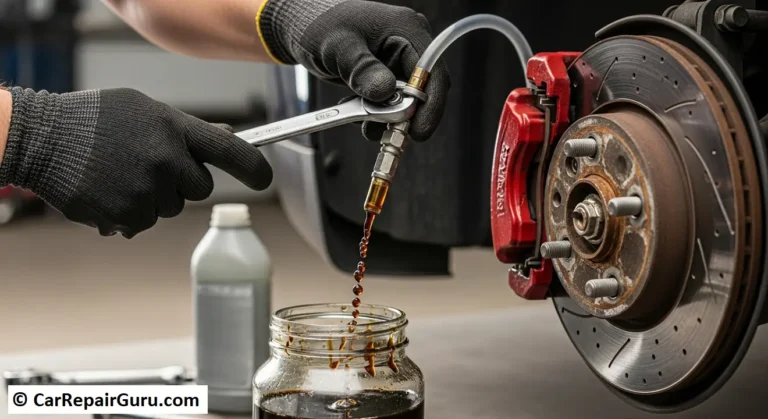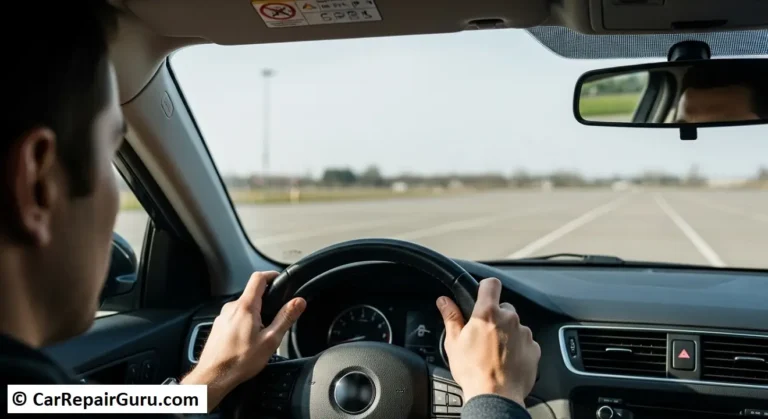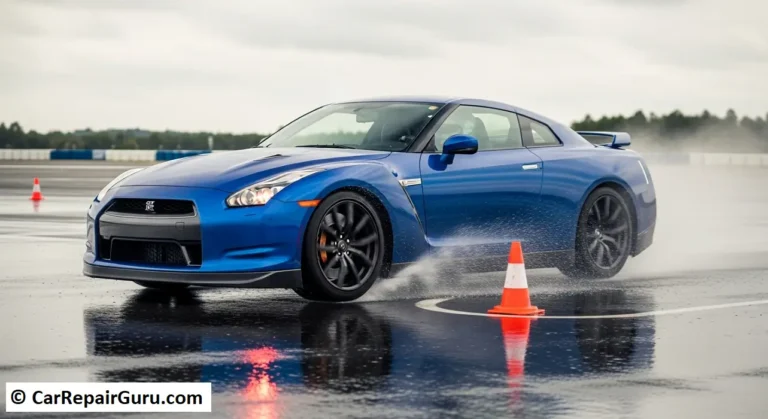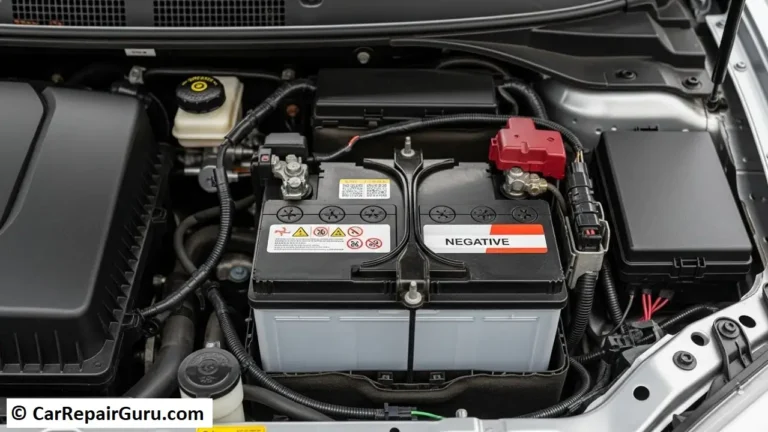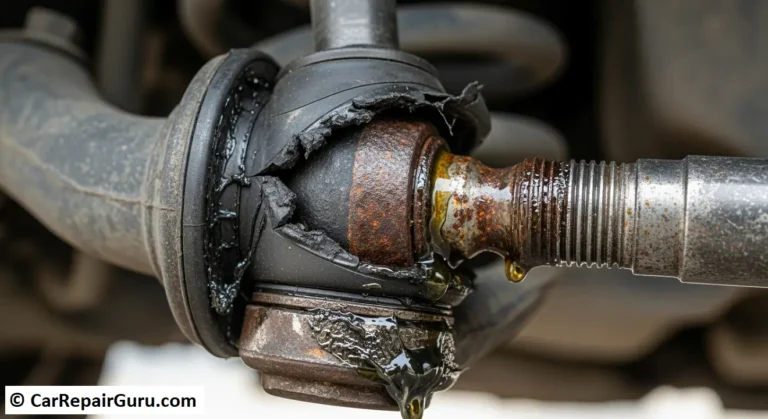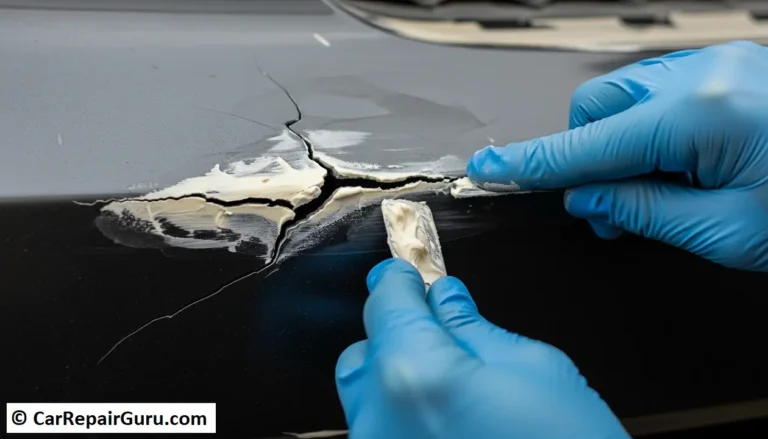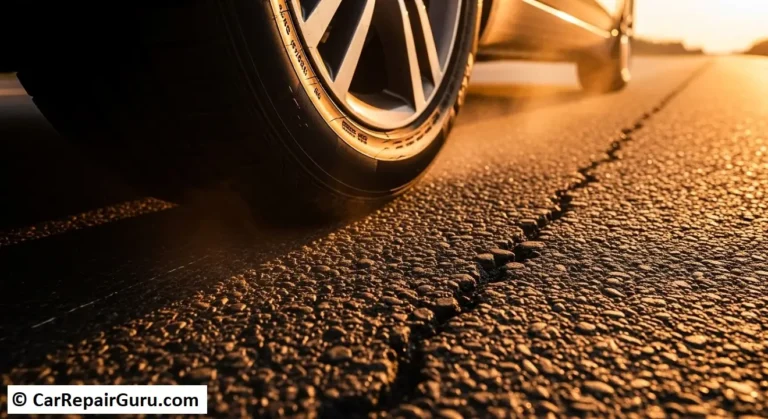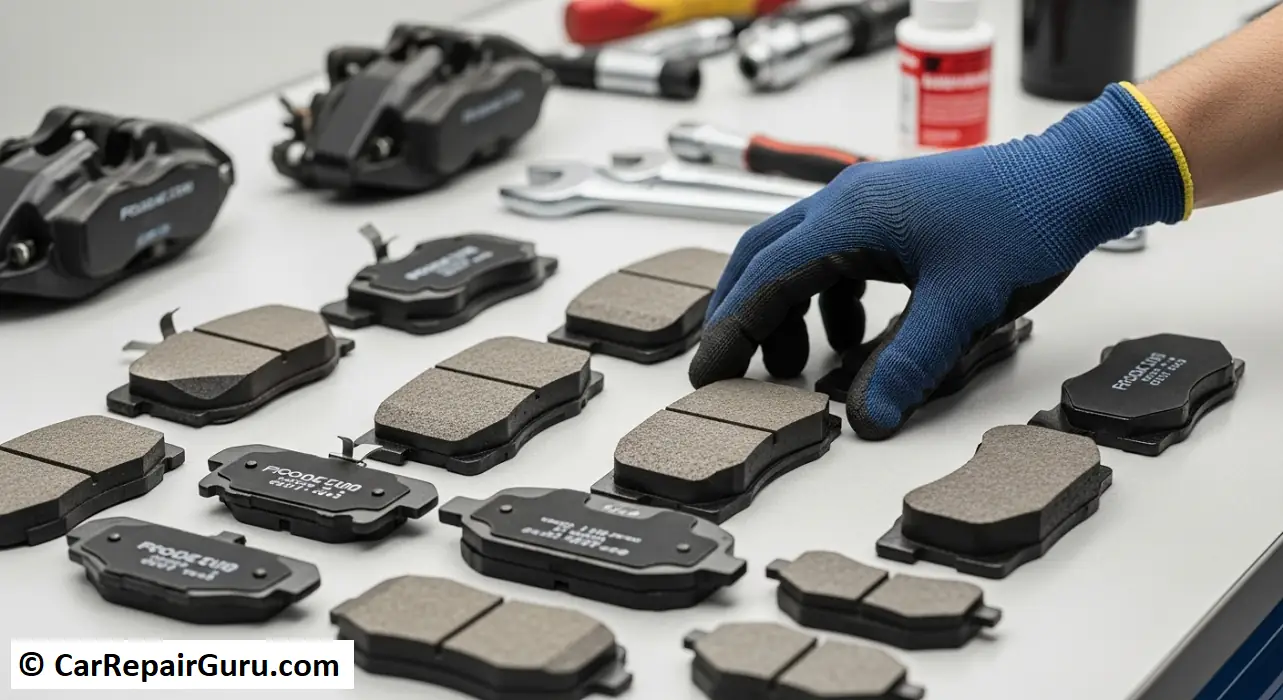
We’ve all been there. That heart-in-your-throat moment when a car stops suddenly ahead of you, and you rely on your brakes to save the day. Your ability to stop safely and confidently is the single most important safety feature of your vehicle. But when it’s time for a brake job, you’re suddenly faced with a wall of confusing options: ceramic, semi-metallic, organic, OEM, aftermarket… what does it all mean?
Choosing the wrong brake pads can lead to noisy stops, poor performance, a brake pedal that feels like a sponge, or even damage to other parts of your brake system. It feels complicated, but it doesn’t have to be.
This guide will be your clear, no-nonsense roadmap. We’ll demystify the different types of brake pads, help you understand what matters for your car, and give you the confidence to choose the right brake pads for your specific driving needs.
Why Your Brake Pad Choice Matters More Than You Think
Brake pads are more than just a wear-and-tear item on a maintenance checklist. They are a critical component that directly influences your entire driving experience. The material and design of your brake pads have a direct link to:
- Safety & Stopping Distance: This is the big one. The right pads provide consistent, reliable stopping power when you need it most. The wrong ones can fade under heat, increasing the distance it takes to stop.
- Driving Experience: Do you hate squealing brakes? Can you not stand a vibrating brake pedal? The material of your pads dictates noise levels, pedal feel, and overall smoothness.
- Vehicle Health: Aggressive brake pads can wear down your brake rotors much faster, leading to more expensive repairs down the road. A softer pad is gentler on your system.
- Cleanliness & Aesthetics: If you take pride in your clean wheels, you know the frustration of brake dust. Some pads produce a thick, black dust, while others are virtually dust-free.
The 3 Main Types of Brake Pads – A Head-to-Head Comparison
At the heart of how to choose brake pads is understanding the three primary materials they are made from. Each has a distinct personality with its own set of strengths and weaknesses.
1. Organic (NAO – Non-Asbestos Organic) Brake Pads
Think of Organic pads as the quiet, gentle option. They are made from a mixture of non-metallic materials like glass, fiber, rubber, and even Kevlar, all held together by a high-temperature resin.
- Pros:
- Whisper-Quiet: They are the quietest pads on the market.
- Rotor-Friendly: Their soft composition is very gentle on brake rotors, extending rotor life.
- Low Cost: Typically the most affordable option.
- Cons:
- Faster Wear: They wear out more quickly than other types.
- More Dust: They tend to produce more dust, though it’s often lighter and easier to clean than metallic dust.
- Limited Temperature Range: They don’t handle high heat well and can experience “brake fade” (a temporary loss of stopping power) under aggressive driving or heavy loads.
Best For: The daily commuter who prioritizes a quiet, smooth ride over high-performance braking. They are a great budget-friendly choice for many smaller cars and sedans that see typical city and highway use.
2. Ceramic Brake Pads
Ceramic pads are the modern premium choice for a huge range of vehicles. They are made from a dense, ceramic-based material (similar to pottery) with fine copper fibers embedded within to aid in heat dissipation and friction.
- Pros:
- Extremely Quiet: They offer near-silent operation, rivaling organic pads.
- Low Dust: This is their superstar quality. They produce very little dust, and what they do produce is a light color that doesn’t cling to your wheels.
- Long-Lasting: They are very durable and have an excellent lifespan.
- Stable Performance: They provide consistent stopping power across a very wide range of temperatures.
- Cons:
- Highest Cost: They are generally the most expensive option upfront.
- Less “Bite”: Some drivers feel they have a slightly less aggressive initial “bite” compared to semi-metallics, especially when cold.
Best For: The vast majority of modern drivers. If you value quietness, cleanliness, and long life for your daily driver, luxury car, or SUV, ceramic brake pads are almost always the best answer.
3. Semi-Metallic Brake Pads
These are the workhorses of the brake pad world. Composed of 30% to 70% metal particles like steel, iron, and copper, mixed with graphite lubricant and other fillers, they are built for performance and durability.
- Pros:
- Superior Stopping Power: They offer an excellent, aggressive initial “bite” and fantastic overall stopping power.
- Excellent Heat Management: The metal content pulls heat away from the rotor effectively, making them highly resistant to brake fade.
- Durable: They are very tough and can handle a lot of abuse.
- Cons:
- Noisy: They are the loudest of the three types and can be prone to squealing.
- Dusty: They produce a significant amount of dark, corrosive brake dust that sticks to wheels.
- Hard on Rotors: The aggressive metallic compound will wear down your brake rotors faster than other pad types.
Best For: Drivers who demand performance. This includes enthusiasts with sports cars, anyone who tows a trailer or hauls heavy loads with their truck or SUV, and fleet vehicles that need maximum durability. This is the clear winner in the ceramic vs semi-metallic brake pads debate for heavy-duty applications.
Match the Pad to Your Pavement – Aligning Brake Pads with Your Driving Style
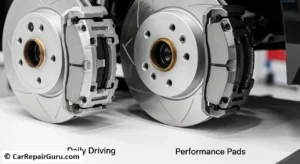
Now let’s apply this knowledge. The best brake pads for your car depend entirely on how you use it.
For the Daily Commuter
- Your Needs: Your driving is mostly city streets and highways. You value a quiet, smooth ride, want to keep your wheels clean, and need reliable, consistent stopping for everyday traffic.
- Our Recommendation: Ceramic brake pads are your best friend. The upfront cost is easily justified by their long life, clean operation, and silent performance. If the budget is tight, Organic pads are a perfectly acceptable second choice.
For the Performance Enthusiast (Spirited Driving, Track Days)
- Your Needs: You demand the absolute best from your vehicle. You need sharp, immediate stopping power (a strong “initial bite”) and brakes that won’t fade after a few hard corners or a lap around the track. Noise and dust are secondary concerns.
- Our Recommendation: Semi-metallic brake pads are the only way to go. They provide the high-temperature stability and aggressive friction needed for performance driving. For dedicated track use, look into specialized high-performance compounds designed specifically for that environment.
For the Heavy-Duty Hauler (Trucks & SUVs Used for Towing)
- Your Needs: You are putting your vehicle under extreme stress by towing a boat, camper, or work trailer. Your brakes need to dissipate massive amounts of heat to prevent dangerous brake fade on long downhill grades and stop a much heavier total weight.
- Our Recommendation: You need severe-duty or fleet-grade semi-metallic brake pads for towing. These are engineered with the highest metal content for maximum stopping power and heat management. Using standard passenger car ceramic or organic pads in this situation is unsafe and not recommended.
Beyond the Pad – How Rotors and Calipers Affect Your Choice
Choosing the right pad is a huge step, but remember that brakes are a system. The pads work in partnership with your rotors and calipers.
The Pad and Rotor Partnership
Your brake pads press against your brake rotors to create the friction that stops your car. Because of this, brake pads and rotors wear out together. Putting brand new, perfectly flat brake pads onto old, grooved, or warped rotors is a recipe for disaster. It will cause noise, vibration, and will destroy the new pads in a fraction of their normal lifespan.
The Golden Rule: Always plan to either resurface (if they have enough thickness) or replace your brake rotors at the same time you replace your pads. This ensures a clean, flat surface for the new pads to bed into.
Do You Need Performance Rotors (Drilled or Slotted)?
You’ve probably seen rotors with holes drilled through them or slots cut into the surface.
- Slotted rotors are designed to scrape gas, water, and debris away from the pad’s surface, ensuring a clean contact patch.
- Drilled rotors are designed to vent heat and gases quickly to prevent brake fade.
For 95% of drivers, a standard, smooth-faced (blank) rotor is all you need. Drilled and slotted rotors are primarily for serious performance or heavy towing applications where extreme heat is a constant issue. For daily driving, they can sometimes be more prone to cracking and may not offer a noticeable benefit.
The Final Step – The Importance of a Proper “Bedding-In” Procedure
You’ve installed your perfect new pads and rotors. You’re done, right? Not quite. The first few miles are crucial for ensuring a long, quiet life for your new brakes. This is called the brake pad bedding-in process.
What is “Bedding-In” Brakes?
Bedding-in is the process of transferring a thin, even layer of friction material from the new pads onto the surface of the new rotors. This creates a perfectly matched friction surface, ensuring the two components work together flawlessly.
Why You Can’t Skip This Step
Improper or non-existent bedding-in is the #1 cause of new brake pads being noisy. It can lead to glazing, where the pad surface becomes hard and smooth, reducing stopping power and causing squealing. It also ensures you get the maximum performance and lifespan you paid for.
A General Bedding-In Procedure
Disclaimer: This is a general guide. ALWAYS consult the specific instructions provided by your brake pad manufacturer, as procedures can vary.
1. Find a safe, open road with no traffic.
2. Perform 5-6 moderate, brisk stops from about 40 mph down to 10 mph. Do not come to a complete stop. You want to generate heat without stopping.
3. Perform another 3-4 harder stops from about 60 mph down to about 15 mph. Again, do not come to a complete stop or engage the ABS.
4. After the last hard stop, drive for 5-10 minutes at a moderate speed, using the brakes as little as possible. This allows them to cool down evenly. It’s critical not to sit with your foot on the brake pedal while they are hot, as this can leave an uneven deposit on the rotor.
Your brakes are now ready for normal, everyday use.
Your 4-Step Checklist to Choosing the Right Brake Pads
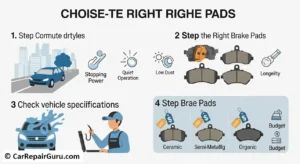
Feeling overwhelmed? Let’s boil it down to a simple checklist.
1. Identify Your Primary Driving Style: Are you a city commuter, a weekend racer, or a heavy hauler? Be honest.
2. Determine Your Priorities: Rank what matters most to you: Is it stopping power? Quiet operation? Low dust? Or longevity?
3. Check Your Vehicle’s Specifications: Ensure you are buying pads that fit your car’s specific make, model, year, and sub-model. Use an online parts finder or consult your owner’s manual. Your car may also have OEM brake pads that were a specific type (like ceramic) from the factory, which is a good baseline.
4.Set Your Budget & Compare: With your needs defined, you can now confidently compare ceramic, semi-metallic, or organic options within your price range.
The Bottom Line – Confidence in Your Stop
As we’ve seen, there is no single “best” brake pad for every car. The secret is finding the right brake pads for your car and your life. By understanding the core differences between organic, ceramic, and semi-metallic pads and honestly assessing your driving style, you can move past the confusion.
You can now make a confident, safe, and cost-effective decision that will have you stopping smoothly for tens of thousands of miles to come.
Frequently Asked Questions
Are more expensive brake pads always better?
Not necessarily, as “better” depends entirely on your driving needs. An expensive performance pad would be noisy and harsh for a daily driver, so it’s about matching the pad type to your use case.
Can I use different types of brake pads on the front and back?
It is strongly recommended to use the same material on both axles. Mixing pad types can unbalance your car’s braking system, leading to unpredictable and potentially unsafe stops.
What are the signs my brake pads are worn out?
The most common sign is a high-pitched squeal from the wear indicator. You may also notice a deep grinding noise (a sign of severe wear), a vibrating brake pedal, or a brake warning light.
Do I have to replace my rotors when I get new pads?
It is the best practice to either replace or resurface your rotors with new pads. This provides a fresh, flat surface that prevents noise, ensures proper performance, and extends the life of the new pads.
What material are my car’s original factory pads?
This varies widely; there is no single standard. Economy cars often use organic pads, many modern sedans and SUVs use ceramic, and trucks or performance cars frequently come with semi-metallic pads.
